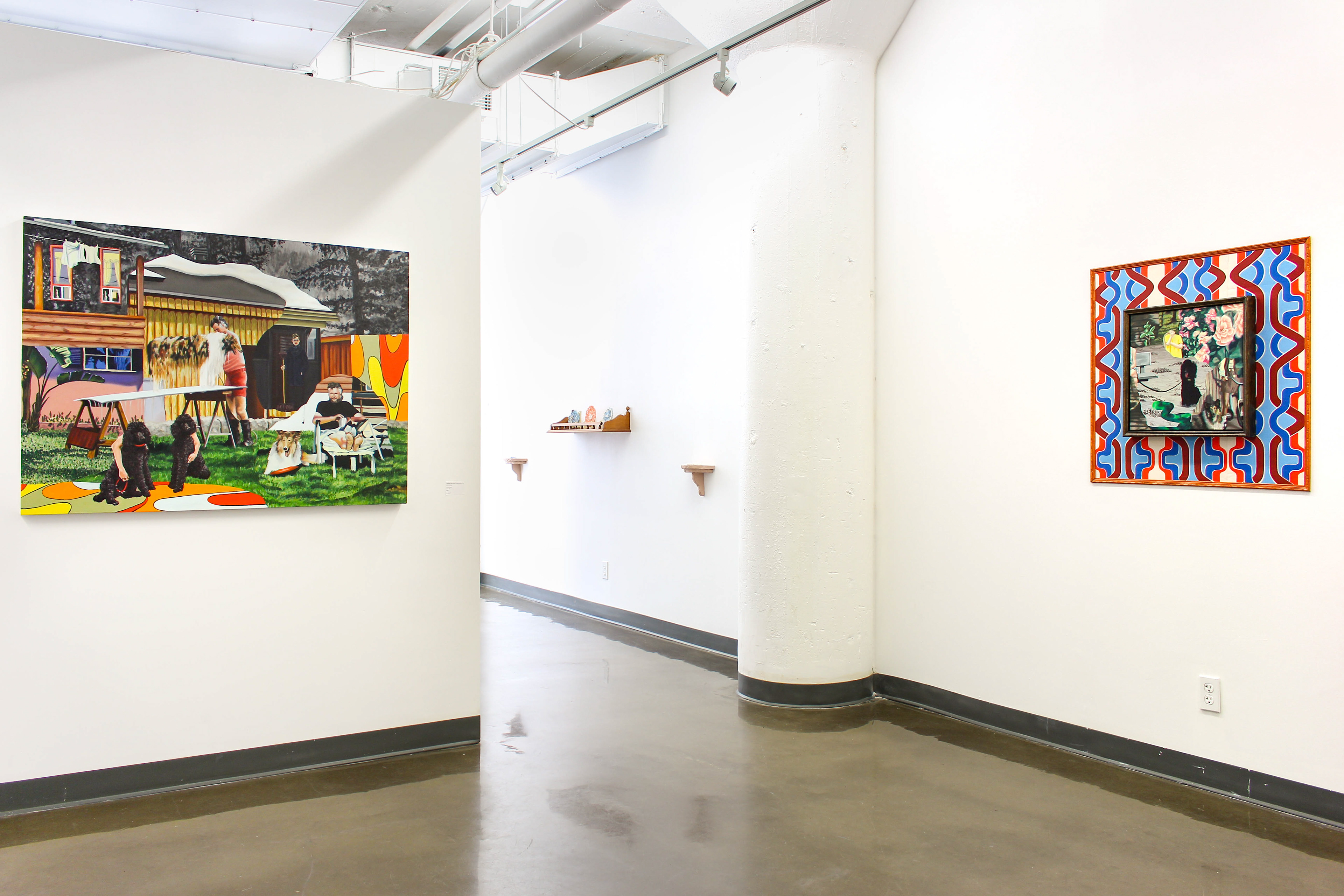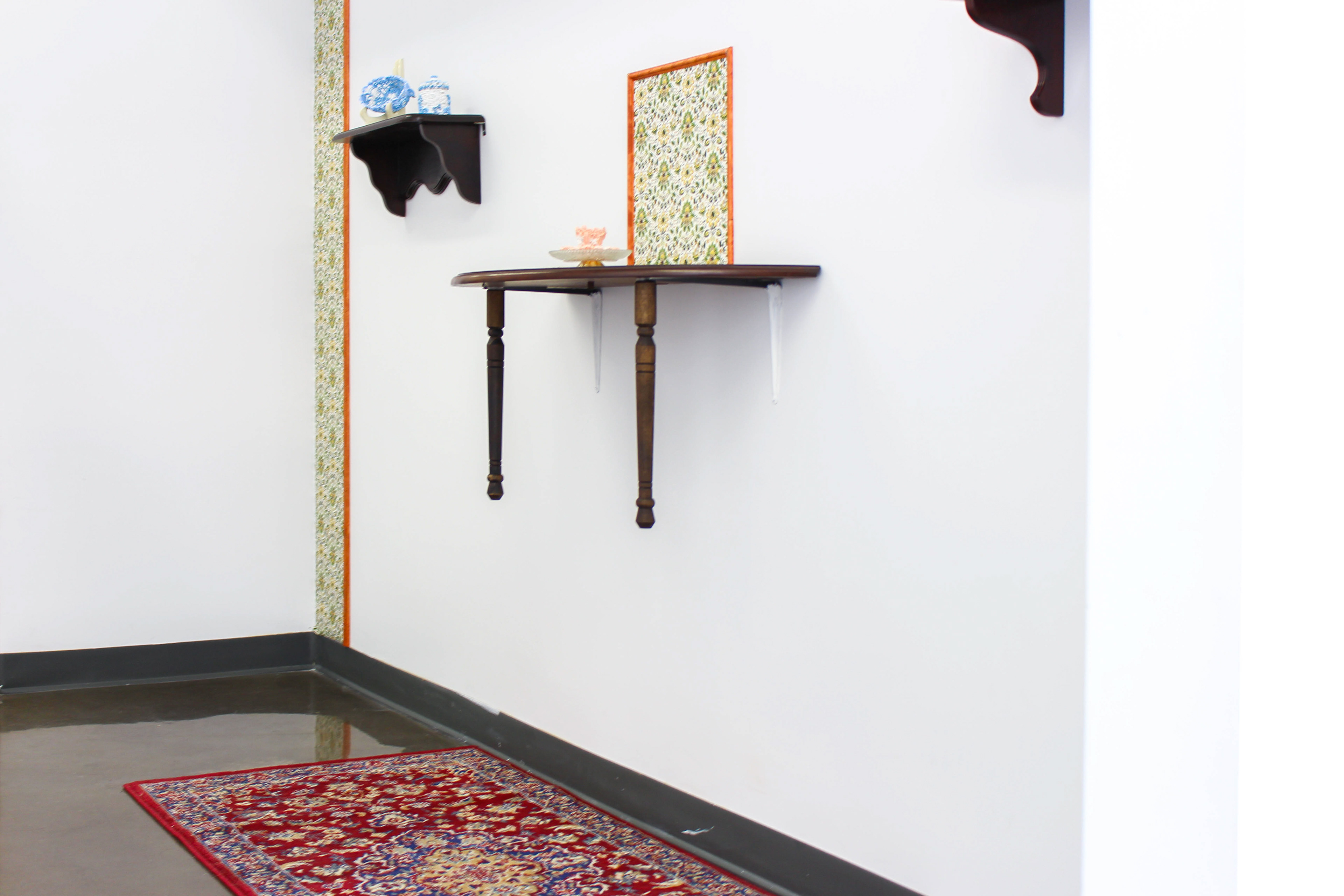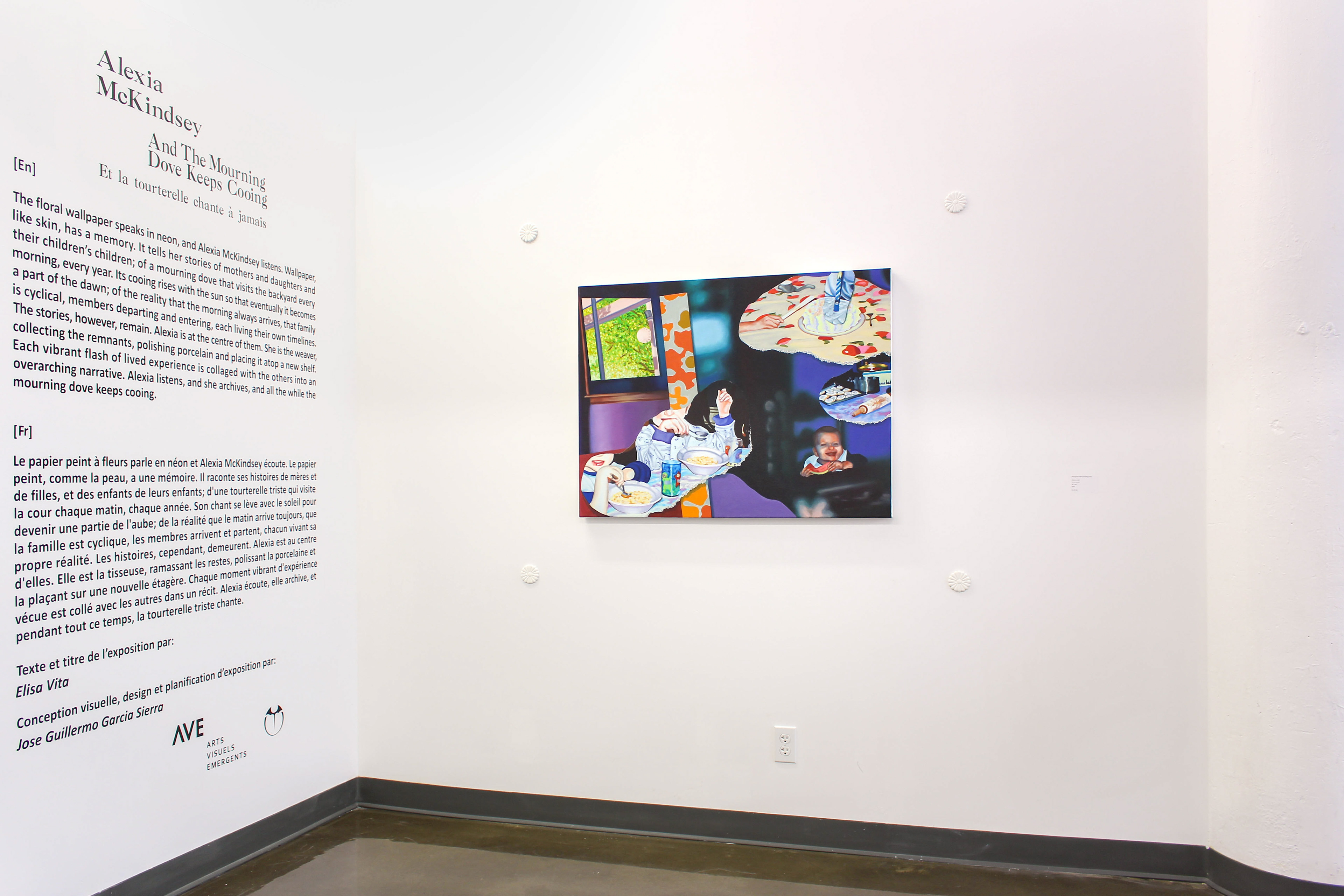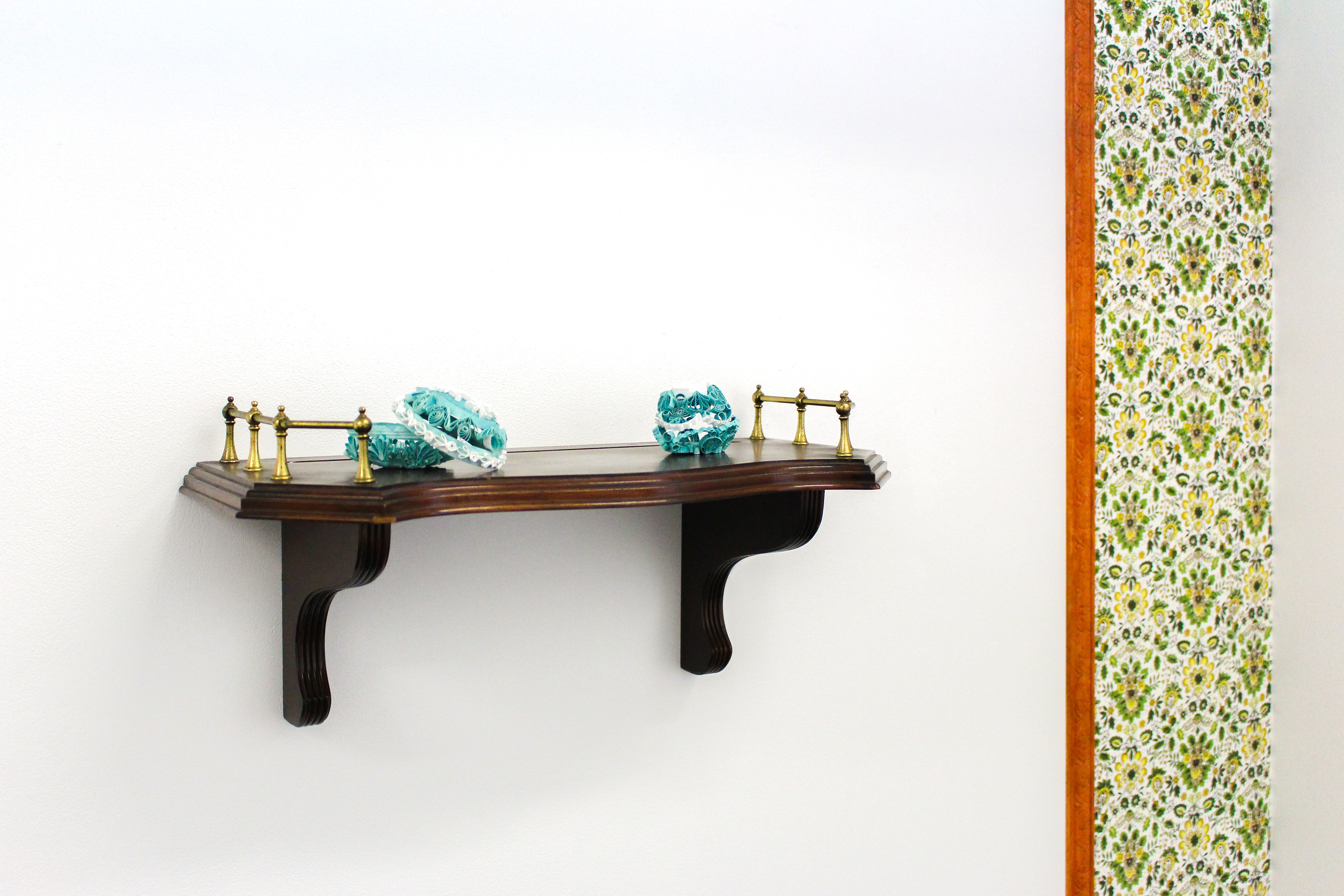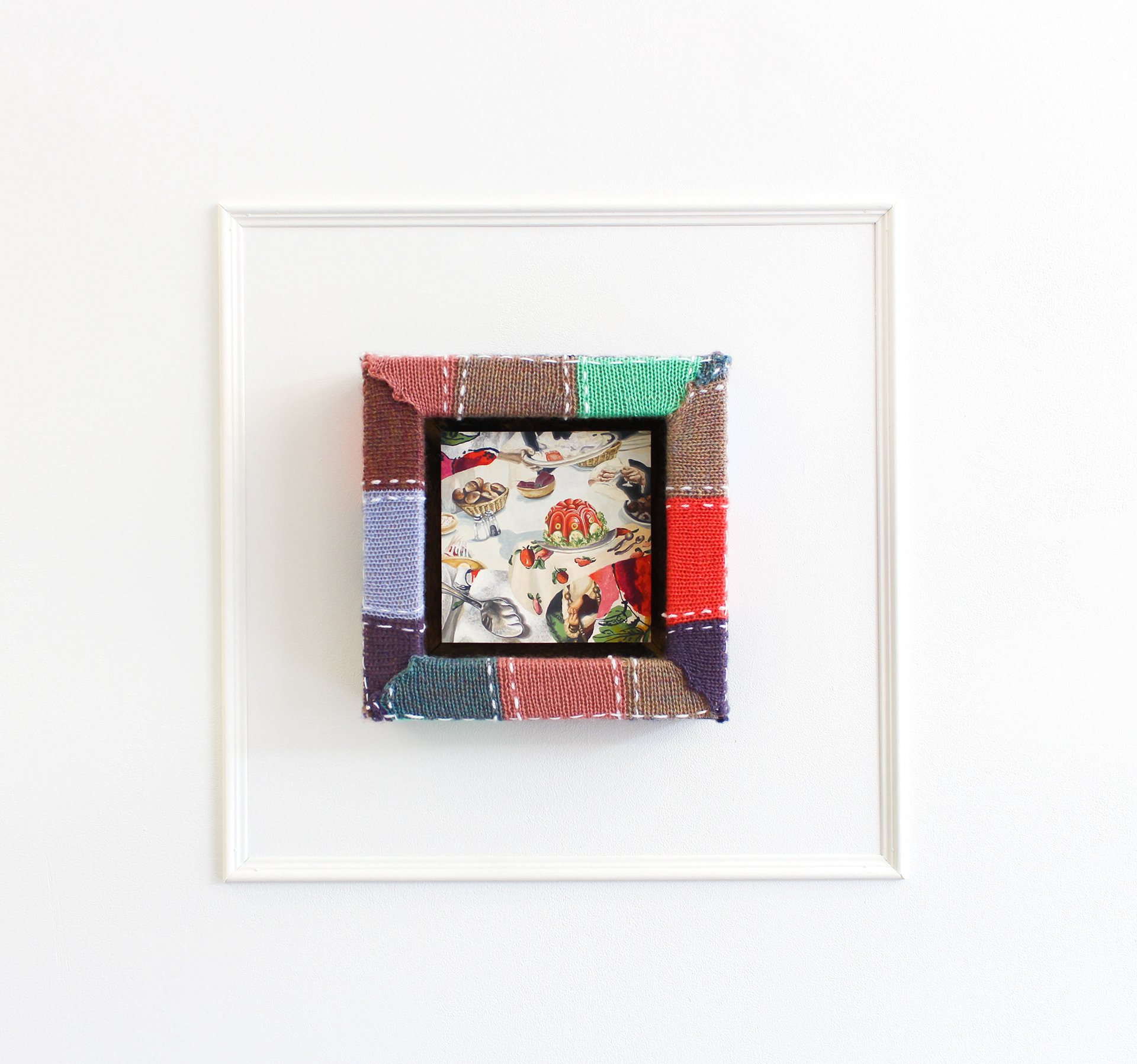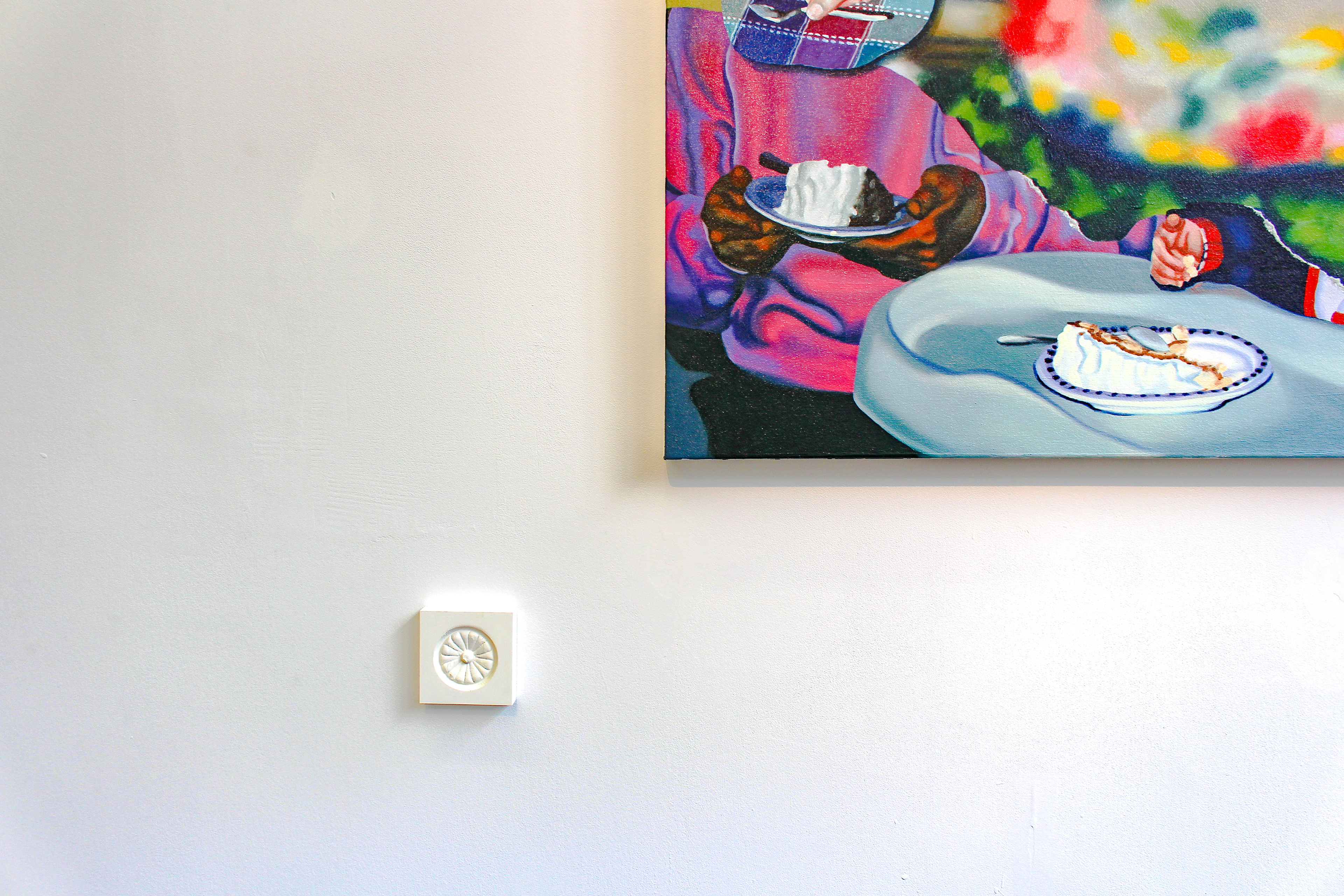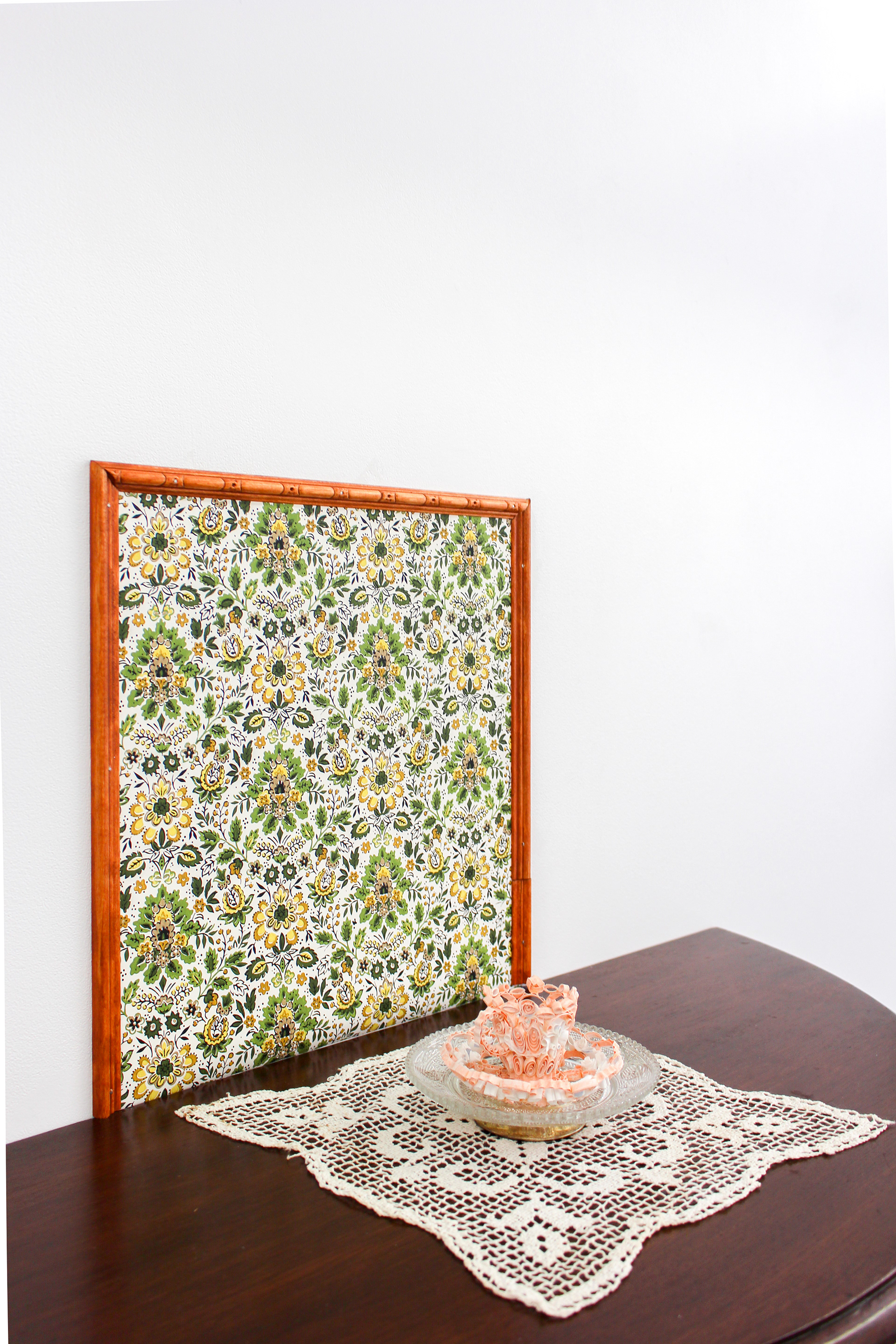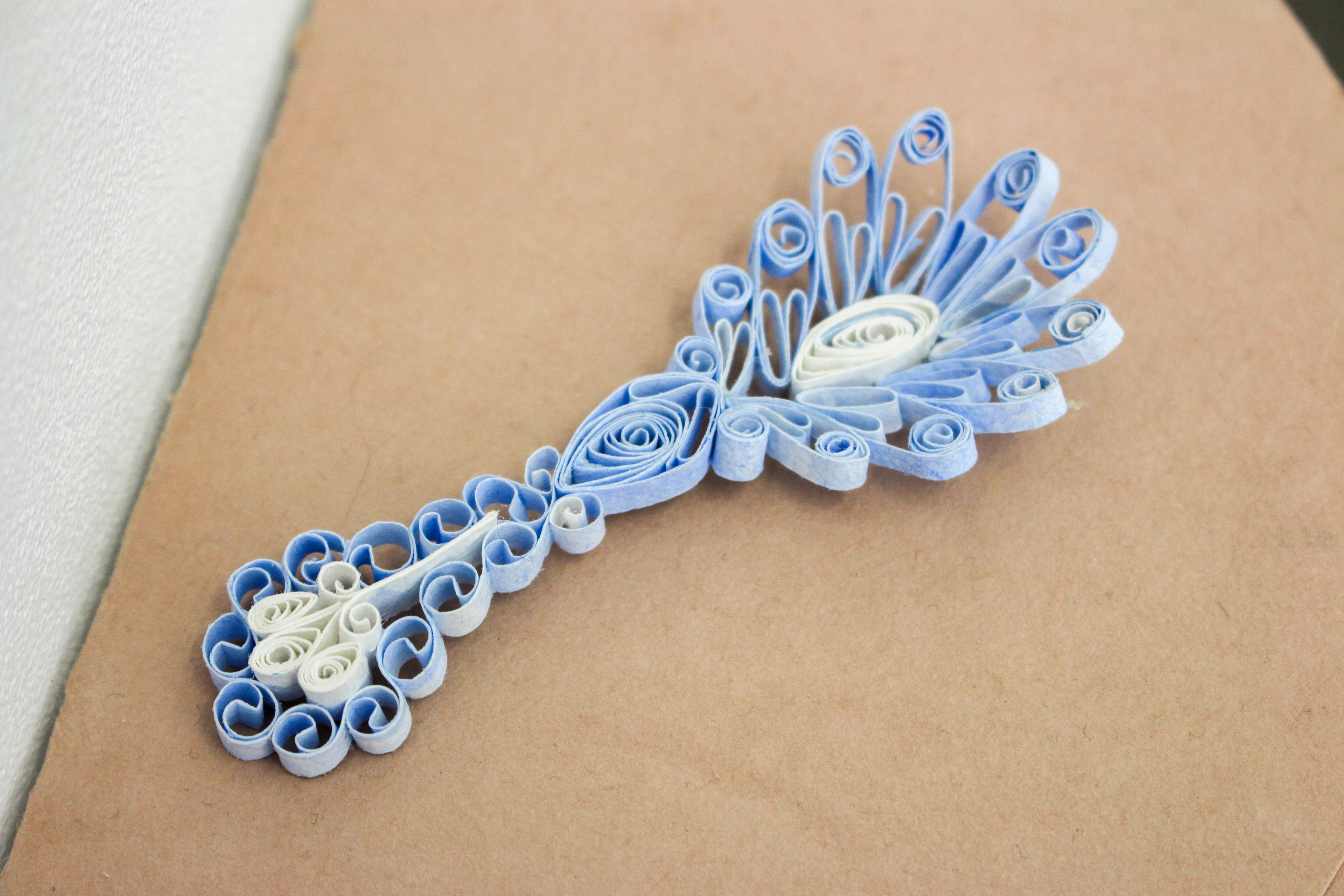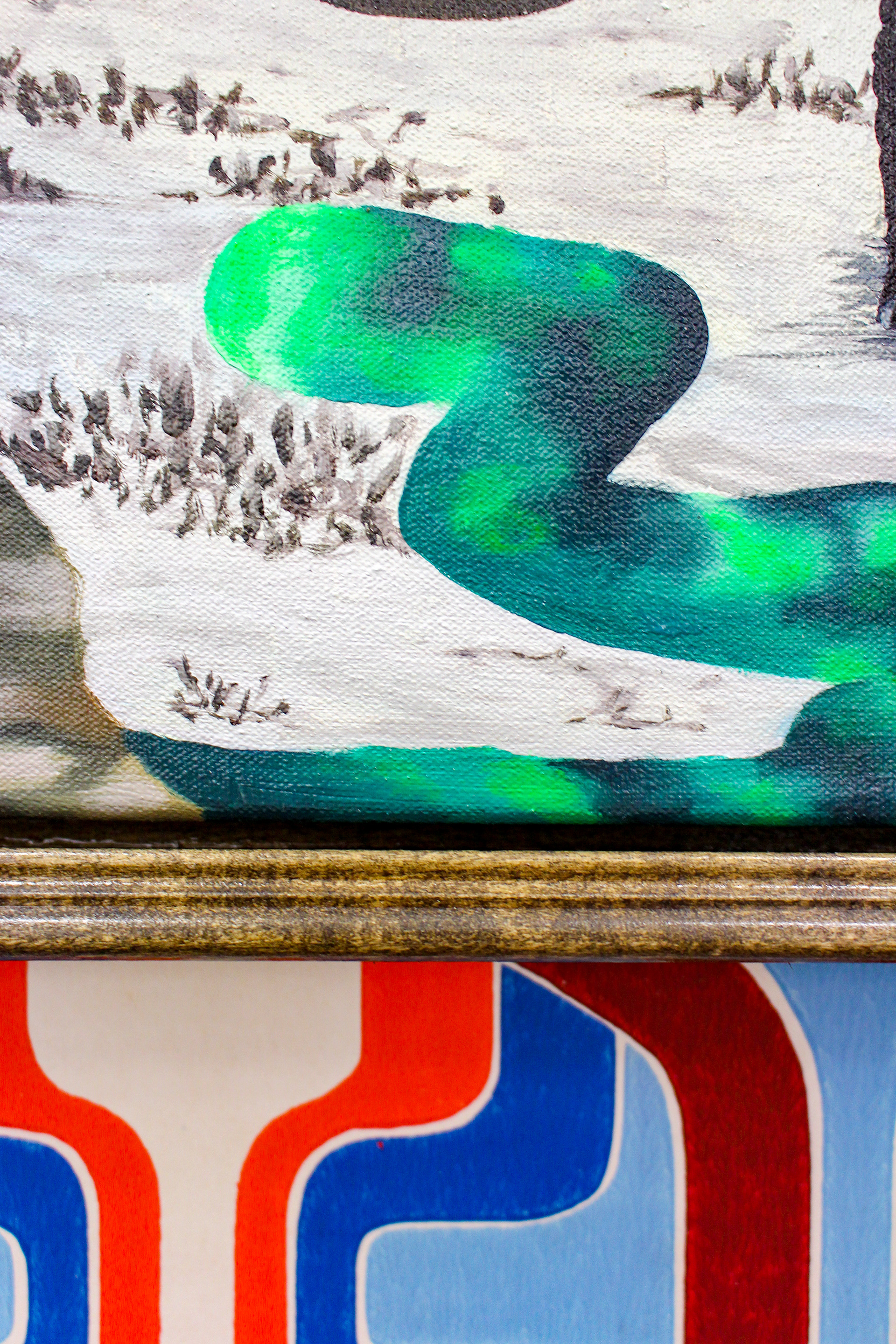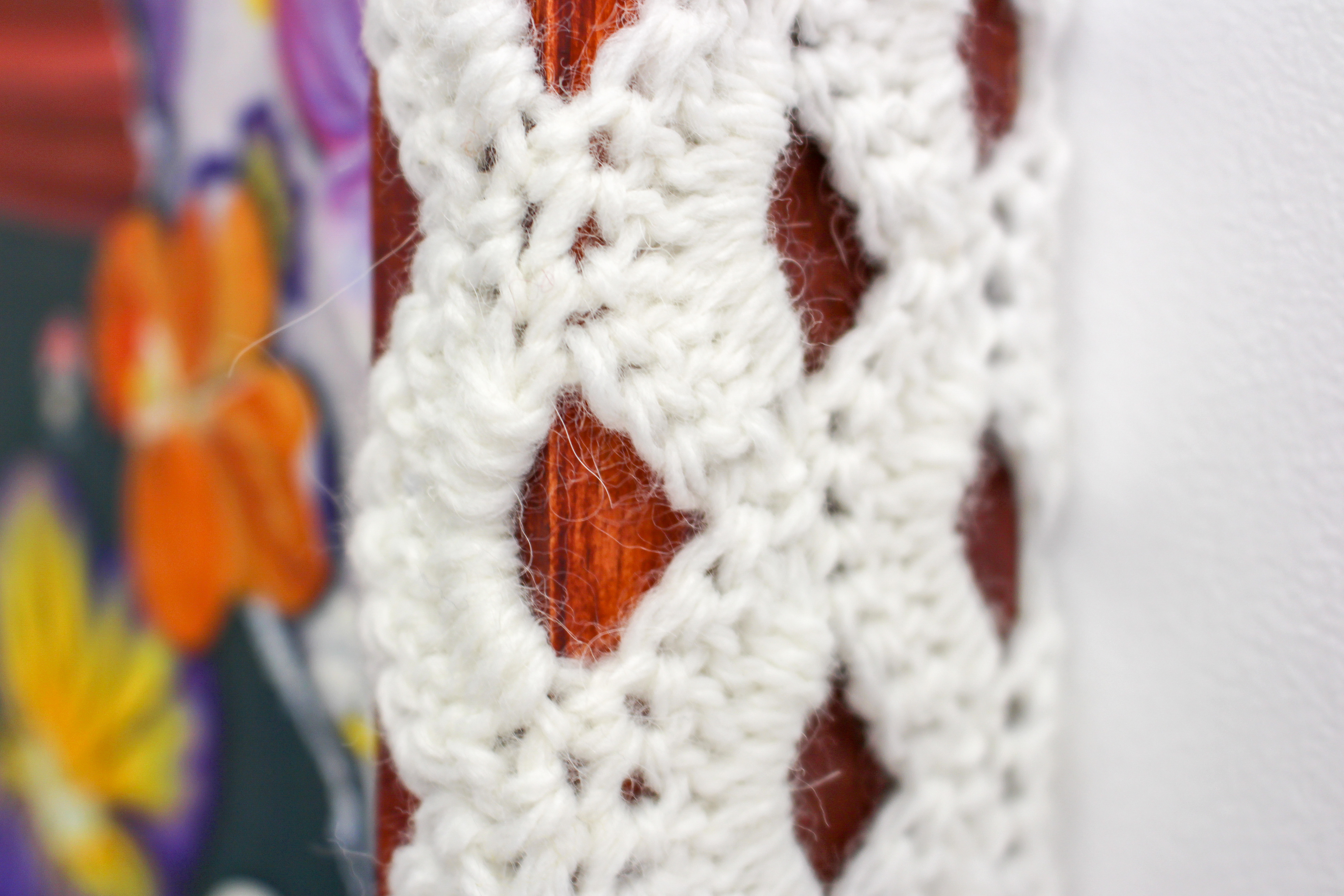And The Mourning Dove Keeps Cooing
The floral wallpaper speaks in neon, and Alexia McKindsey listens. Wallpaper, like skin, has a memory. It tells her stories of mothers and daughters and their children’s children; of a mourning dove that visits the backyard every morning, every year. Its cooing rises with the sun so that eventually it becomes a part of the dawn; of the reality that the morning always arrives, that family is cyclical, members departing and entering, each living their own timelines. The stories, however, remain. Alexia is at the centre of them. She is the weaver, collecting the remnants, polishing porcelain and placing it atop a new shelf. Each vibrant flash of lived experience is collaged with the others into an overarching narrative. Alexia listens, and she archives, and all the while the mourning dove keeps cooing.
Exhibition text and title by Elisa Vita (@_elisavita_)
Presented at AVE - Arts Visuels Emérgents
September 10 - October 1, 2020
And The Mourning Dove Keeps Cooing brings together a series of works dealing with cycles, perpetuation and intergenerationality. Working through a collection of archives from the past, whether it be in the form of photographic imagery, objects or memories, Alexia McKindsey has documented phenomena, narratives and traditions reinforced and preserved over a passage of time culminating in a series of paintings, textiles and craft-based practices synthesized into a domesticated AVE.
Interview with Chantal L'Heureux for Magazine radio In situ
Radio Centre-Ville 102,3
Intergenerationality
Mapping out the particularities of my heritage; how the members and circumstances of the generations of my own family have informed one another, including my own identity. I am my mother and her mother and my father’s mother, etc.
A family of collies lived alongside my grandparent's, my mother and my aunt throughout the course of their lives. A family of poodles lived alongside my aunt later on in her life.
Cycles
Memory and interpersonal histories are cyclical and perpetual rather than following a linear timeline and series of information.
A collective story; one that maps out the history of my own identity in relation to the generations preceding me across multiple spaces and timeframes.
My great-grandmother kept a Hoya plant (1910-1920) in which she clipped a portion of, grew and gifted to my grandparents when they moved to their first home (~1940), My grandparent’s, following the same sentiment, clipped a portion of that plant, grew it and gifted it to my Dad when he moved out to his first home (1983), the plant now resides with my parents to this day. I clipped a portion of that plant, to grow and house in the gallery throughout the course of the exhibition.
A table, cut in half and hosting the Hoya plant, a tablecloth, a doily crocheted by my great-grandmother and a quilled Wedgwood teacup and saucer, is positioned in between the centre wall of the gallery creating a full circle when walking through the exhibition.
Perpetuation
Circumstances, rituals and traditions that carry through or that have been reinforced and preserved over a passage of time.
Nuances within familial dynamics, relationships and personalities that are brought down generation by generation.
The quilled objects are replicas of vintage Wedgwood pieces I inherited from my paternal grandfather’s collection and the paper used to form them are handmade from the baby sheets passed down to me from his wife, my paternal grandmother. My intentions with these works was to safeguard the keepsakes of my now own, familial lineage preceding me and the legacy of their union. I see the labour of processing the baby sheets into paper pulp as reinforcing the value, care and adoration placed on these fabrics by my grandmother. On the other hand, I see the use of quilling as significant of the diligence, attention and preciousness my grandfather projected upon these objects he collected.
Matriarch
Highlighting the lives of the dominate women of my family from their childhood to motherhood. Considering the traditions and roles they assumed; motherhood and childcare, home-care, caretaker, dining traditions and craft-based approaches to art-making.
Historically, quilling was gilded onto reliquaries, books and icons by French and Italian nuns in the 16th and 17th century; later became popular amongst genteel ladies in the Stuart period, ladies of leisure in the Georgian and Regency periods who primarily worked the technique into coats of arms and other domestic objects. It has had a modern revival in North America following European settlement, where it is a niche craft still practiced .predominately by women and taught to children today. It is a practice I picked up in my childhood.
The handwoven, crocheted and knitted frames surrounding the egg temperas are derived from the tablecloth and wallpaper patterns my grandmother used and decorated their home with in the 1960's and that are still in use to this day. The frame surrounding The Good, The Bad and The Aspic is knitted by my mother.
Dinner traditions include cake served at celebratory occasions and the meals served during holiday traditions,








